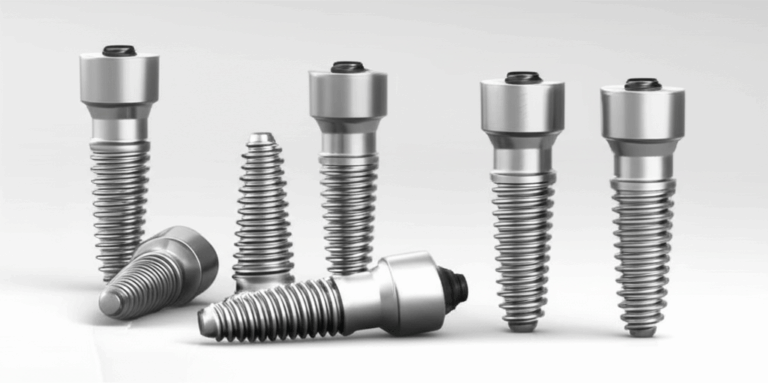
Does CalOptima Cover Dental Implants? Your Easy Guide From My Experience
Table of Contents
- Call CalOptima Member Services
- Ask Your Dental Provider (In-Network)
- Look at Your Plan’s Coverage Book (EOC)
The Short Answer: It’s Complicated, But Possible Sometimes
I’ll be straight with you—when I tried to find out if CalOptima covers dental implants, I wanted a yes or no. What I found was a mix of rules, rare chances, and a process that takes time. In short, CalOptima (and Denti-Cal, which works with them) almost never pays for dental implants. But, and this is important, it’s sometimes possible, but only if it’s really needed for your health. If it’s for looks, CalOptima’s answer is almost always “no.” If you really can’t eat or speak because of missing teeth, you might have a chance.
I’m sharing what I learned after digging around, talking to dental offices, and using CalOptima myself.
Understanding CalOptima and Denti-Cal Dental Benefits
What is CalOptima?
When I first heard about CalOptima, I didn’t get it. Was it like normal health insurance? No, CalOptima is a special local health plan for people who live in Orange County and use Medi-Cal. If you get Medi-Cal here, CalOptima helps you get your medical and dental care. It’s the group that helps set up and manage your care, and connects you to doctors and dentists.
How Denti-Cal Fits In
Here’s something important. Denti-Cal is just California’s way of saying “Medicaid for dental care.” If you have CalOptima, your dental care is probably through Denti-Cal. CalOptima helps run your whole health plan, but Denti-Cal is the part for your teeth—like exams, regular fillings, pulling teeth, and sometimes a few bigger jobs.
Not long ago, California decided to pay for more adult dental care. So, more people get stuff covered than before. But that didn’t mean dental implants were added to the normal list.
General Denti-Cal Coverage for Adults
The Denti-Cal booklet makes it simple: Denti-Cal pays for exams, x-rays, cleanings, fillings, pulling basic teeth, and basic dentures. If you want fancier work—like tooth-colored fillings on back teeth, whitening, or dental implants—they usually say no. They care about fixing health problems, not making teeth look better.
When Dental Implants Might Be Covered by CalOptima/Denti-Cal
Here’s where I had to dig into the policy details and call clinics.
The “Medical Necessity” Rule
Getting dental implants paid for isn’t totally out of the question. Sometimes, if you can really show it’s “medically needed,” Denti-Cal may look at your case. That’s the magic word—and the hardest part. But what does it mean?
It means if something serious happened to your mouth (like an accident messed up your face, or you were born in a way dentures won’t work, or another medical issue means dentures or bridges won’t work), you might have a shot. It’s never about looks. It’s about basic needs—like eating, talking, or stopping other health problems.
Here’s a real story: I once helped a friend—call her Maria—who lost her front teeth in a bike crash. Dentures didn’t fit and kept hurting her. Her surgeon argued it was a health issue, not for looks. It still took lots of paperwork and doctor letters, but she finally got some help for her implants. This doesn’t happen much though.
Special Programs & Plans (e.g., CalOptima PACE, OneCare Connect)
If you’re in a special CalOptima plan—like PACE (for older folks who need extra help) or OneCare Connect (for people with both Medicare and Medi-Cal)—your benefits might cover a little more. Some of these plans have better dental coverage, even for implants, but you’ll still need to prove you really need it for health. You need to check your own plan and talk to someone at member services. Don’t skip this!
Getting Approval Comes First
Even if your situation might be covered, nothing happens without approval. Your dentist or surgeon will have to send in a plan that explains why implants are needed, not just wanted. They’ll need x-rays, photos, and maybe letters from other doctors. Then, you wait. From my experience, it takes patience and you’ll need to check in a lot to see where things are.
What’s Usually Not Covered (and Why)
When it comes to dental implants, CalOptima and Denti-Cal mostly say “no” for these reasons.
Just for Looks
If you want implants just to look better, Denti-Cal won’t pay. Coverage is about fixing your health, not making you feel more confident with your smile. If you want straighter or whiter teeth, they won’t help pay for that.
Normal Tooth Replacement
I used to think losing a tooth meant insurance would get you an implant. Nope. If you’re missing one or two teeth, and you can use dentures or a bridge, that’s what CalOptima will pay for. Implants are only for when nothing else works.
Extra Procedures (Not Included Much)
Need a bone graft or sinus lift before you get an implant? Be ready to pay for that yourself, unless it’s really needed for your health in general. Even for people who got an implant covered, these extra steps usually weren’t paid by CalOptima. Always ask what’s included and what you’ll need to pay.
How to Check If CalOptima Covers Your Dental Implants
Here’s my go-to list when anyone asks me if CalOptima pays for dental implants:
Call CalOptima Member Services
Don’t just guess. Call or go online to CalOptima, have your member ID, and ask them, “What counts as medical need for dental implants?” Write down who you talked to so you can follow up if you need to.
Ask Your Dental Provider (In-Network)
Not all dentists know how CalOptima works. Find a dentist or surgeon who works with them—they’ll know how to fill out forms and get the process going. In my experience, a dentist who’s done this before can save you lots of confusion.
For tough cases, patients I knew did better when their dentist worked with special implant labs. If you need several steps, ask if your provider works with labs like a crown and bridge lab or an implant lab.
Look at Your Plan’s Coverage Book (EOC)
Your book (the EOC) explains what your plan covers, what it doesn’t, and the steps for getting special stuff approved. Read it, especially the parts about big dental work or tooth replacements, and about asking for approval for special care.
Other Tooth Replacements CalOptima/Denti-Cal Covers
If you can’t get implants paid for (which is most of the time), CalOptima does pay for other ways to replace teeth.
Full or Partial Dentures
If you’re an adult on CalOptima through Denti-Cal, dentures (full or partial) are the main thing they pay for. They’re simple, work okay for eating and talking, and lots of people I know use them. They aren’t fancy, but they work.
Fixed Bridges
Depending on which teeth you’re missing and your case, bridges might be covered too. There are rules about how many and which teeth, but it’s worth asking your dentist about. A good fitting bridge depends on a quality dental lab.
Other Choices: Payments and Community Help
If dentures or bridges won’t work for you, or you really want implants, you’ll need to pay on your own. But all is not lost. There are dental schools (where you pay less because students do the work), community clinics with sliding scales, and sometimes programs that help cover costs. Ask your dentist about local help, and check with your city or county health office.
How Much Do Dental Implants Cost (If Not Covered)?
Brace yourself—implants aren’t cheap. When I looked for myself, I was shocked at the price.
Average Out-of-Pocket Costs
Here’s what people usually pay in California right now:
- One implant: $3,000 – $6,000 (for the implant, connector, and tooth)
- Full mouth (like All-on-4): $15,000 – $30,000 for one set of teeth or more
Prices change a lot depending on where you live and who’s doing the work. Big cities like Orange County can cost more.
Ways to Pay
Some offices let you pay over time, and there are credit cards just for dental stuff (but watch out for high interest). Some clinics have lower rates if you don’t make much money. If you want implants, ask about payment plans.
Low-Cost/Community Help
Dental schools are great for cheaper care—it’s checked by teachers, and it costs less. Community clinics or charities may know about free events or special help—just ask.
If you think you need implants for health reasons, not looks, have your dentist write a letter and send it to CalOptima anyway. Sometimes, pushing for a second review gets you farther than you think.
Frequently Asked Questions About CalOptima & Dental Implants
Here are answers to the questions I hear the most:
Q: Does Denti-Cal pay for All-on-4 implants?
A: Almost never. Only if it’s really needed for health and all other options don’t work. All-on-4 costs a lot and is only paid for if you can’t even use normal dentures.
Q: Can I fight back if I’m told no for implant coverage?
A: Yes. You can appeal with CalOptima’s Appeals team. You need your dentist’s help and proof that regular dentures won’t work and this is a real health issue.
Q: What if I have both Medicare and Medi-Cal?
A: You might be able to get a bit more help with plans like OneCare Connect. But, you still need to show your case is a health need. Check your plan first.
Q: How do I find a dentist that takes CalOptima for implants?
A: Use the CalOptima directory, look for oral surgeons who do implants, check they’re in-network, and make sure they know the approval process. Always read reviews or ask around too.
Conclusion: Getting Dental Care With CalOptima
What I learned—and what I tell others—is that insurance like CalOptima almost never pays for implants. But hard doesn’t mean impossible. If you really need implants for health, get your dentist involved, gather your papers, and don’t quit if you get told no the first time. Keep looking for answers, and remember about dentures, bridges, or community clinics.
Trying to get this stuff covered can feel pretty tough, but don’t give up. Your teeth, your health, and your happiness are worth it. If you have questions about labs, dentures, or how implants are made, you can ask a good dental lab for more info.
I hope this guide makes things clearer, gives you some hope, and encourages you to keep trying. Good luck—taking care of your teeth is always worth the effort.







